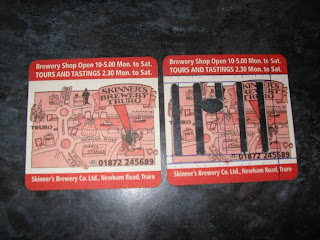The mercenaries involved in the Garda-Vilis campaign have access to two ATVs. I could have just made up the stats for these vehicles but there was another way...
I spent all day yesterday wrestling with the Striker vehicle design sequences and, although it was quite a task (given that I left school with no qualification what-so-ever in mathmatics), the conclusion was most satisfying.
Initially I decided to just make up the measurements on which the design process is built but then I had a thought; what if I were to measure up the actual ATV model and then try to render that?
Here's what I came up with.
First, I used two reference points:
1. 1mm measured equals 1ft in real life.
2. 1ft equals 0.3048m.
According to my measurements the main body of the model was:
35mm long = 35ft = 10.668m rounded to 10.7m
15mm wide = 15ft = 4.572m rounded to 4.6m
10mm high = 10ft = 3.048m rounded to 3.05m
Each tyre was:
5mm wide = 5ft = 1.524m rounded to 1.5m
Each turret was:
5mm long = 5ft = 1.524m rounded to 1.5m
5mm wide = 5ft = 1.524m rounded to 1.5m
4mm high = 4ft = 1.2192m rounded to 1.2m
Having quantified the model I then went through the design sequence and made the following determinations.
The Vehicle was built at TL13
Step A - Chassis Volume
150.121m3 (m3 is meters cubed)
Step B - Suspension
Weight 32.1 tons
Cr40,125
Step C - Chassis Configuration
Front: Radical
Rear: Vertical
Deck: Horizontal
Belly: Horizontal
Left Side: Moderate
Right Side: Moderate
Usable Chassis Space = 70.8126m3
(I stripped out the turret design sequences and put them at the end, hence the occasional jump in steps)
Step G - Crew
Commander, Driver, Gunner (all seated)
Weight 0.6 tons
Cr300
Step H - Power Plant
Fusion with an output of 4.5 megawatts
Weight 4.5 tons
Cr300,000
Using 6.75L of fuel per hour
Step I - Transmission
Weight 2.7 tons
Cr4050
Steps J, K and L are not used for wheeled vehicles.
Step M - Fuel
6.75L per hour = 162L per day
The vehicle would carry a 30 day supply of fuel.
Weight 3.402 tons
Cr170.1
Step N - Chassis Armour
2cm of Superdense armour in all locations.
Weight 57.531 tons
Cr53,695.6
Step P - Obscuration Devices
20 x Prismatic Aerosols
Weight 0.02 tons
Cr400
Step Q - Laser Sensors
1 x Laser sensor
Weight 0.1 tons
Cr38,000
Step R - Electronics
Power 5000 Radio
Power 5000 Radio Jammer
Thermal Imaging
Basic ECM
Map Box
Battle Computer
Weight 0.03005 tons
Cr187,500
Step S - Passengers
10 (extended duration)
Weight 2 tons
Cr500
Step T - Environmental Control
Sealed environment with life support for 13 people.
Weight 6.5708126 tons
Cr13,708.126
Step V - Cargo Capacity
8m3
Weight 8 tons (allocated)
Step W - Waste Space
0.1452m3
TURRET DESIGN
Step D - Turret Dimension
Each turret has 2.7m3 of space
Step E - Turret Configuration
All sides are vertical
Step F - Weapons
1. 1 x Remote mount with a TL13 Laser Rifle.
2. One weapon station in the chassis.
3. No fire control needed as the turret mounts an infantry weapon.
4. Stabilised.
5. Autoloader not required.
Weight for both turrets 0.2176 tons
Cr30,000 for both turrets
Step O - Turret Armour
2cm Superdense in all locations
Weight for both turrets 4.32 tons
Cr4032
Step U - Ammunition Storage
Weight for both turrets 0.4 tons
Cr280,000
These are linked power packs that will provide 1000 shots before requiring recharge from the power plant.
Additional
Each turret has a sealed environment and mounts a Searchlight.
Weight 0.0254 tons
Cr200.054
Note
Each turret has 2.3757m3 of unused space.
VEHICLE RATING
A. Weight: 122.51686 tons
B. Flotation: Will not float
C. Ground Pressure: 7 tons per m3
D. Power to Weight Ratio: 36
E. Road Speed: 126kph (78.2928mph)
F. Cross Country Speed: 25.2kph (15.65855mph)
G. Amphibious Speed: N/a. However it can wade in depths of up to 2m.
H, I, J. Not used for wheeled vehicles.
K. Movement Rates: Road 105cm. Cross Country 30.24cm.
L. Movement Effects on Firing: No Effect.
M. Armour Ratings: Front 28, Sides 21, all other locations including turrets 14.
N. Target Size DMs: Low +5. High +1.
O. TL13 Laser Rifle 40 (20), 80 (12), 400 (4)
P. Miscellaneous Equipment (to be determined by the player)
Q. Price: Cr952,680.87
DESIGNERS NOTES
1. I've left all the fiddly decimal places in my calculations here, obviously they will be rounded (up or down as appropriate) for actual game play.
2. This was designed to be a paramilitary/civilian vehicle similar to the standard Traveller ATV. I doubt it will stand up well in a full on war zone. Hopefully it will do just fine for bullying the TFL around.
3. There is enough unused space in the chassis and turrets to fit different weapons and fire control systems. The idea being that these are modular so you fit the systems you require for the mission.
4. I hereby name the vehicle the Lanzer Industries Vanguard Mk1.
Edit: I finally figured out how to determine displacement tonnage. Total volume divided by 14 was, of course, the answer. Which means the Vanguard Mk1 weighs 10.722929 dtons.








